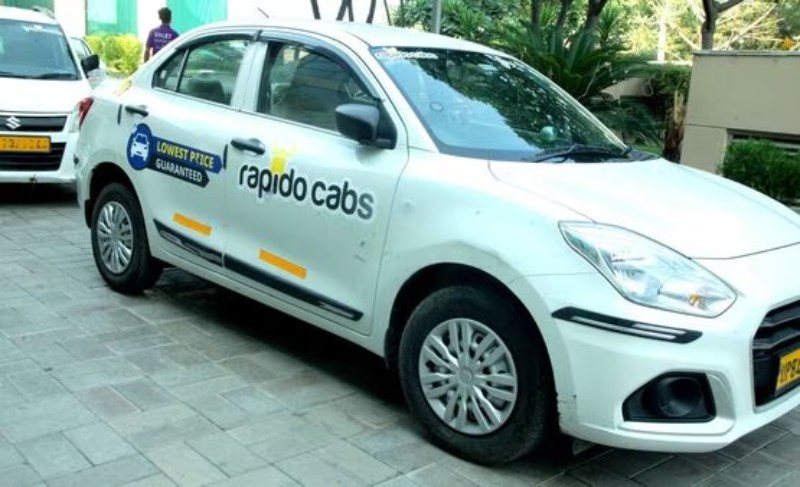With the introduction of “Rapido Cabs,” Rapido formally declared its debut into the taxi aggregation market on Tuesday. The business already offers its clients auto (three-wheeler) passengers and bike taxis. Rapido is now more directly competing with the industry leaders, Ola and Uber, thanks to the launch of a taxi service. Though they are less prevalent in the market, EV-based BluSmart and InDrive are also attempting to break into it.
A month or so ago, Rapido tested its taxi service in Hyderabad in a pilot program. The pilot test had a “fantastic start,” the business declared at that point.
The market for online taxi services in India was estimated to be worth Rs 30.72 billion in FY 2020. From FY 2021 to FY 2025, it is expected to develop at a compound annual growth rate (CAGR) of 12.93%, with a target value of Rs 55.15 billion. There is obviously a ton of untapped potential in the sector.
However, Bhavish Aggarwal’s Ola and the international company Uber, which have also come to be associated with taxi services in the nation, dominate the ride-hailing market. Before their arrival, individual cab operators controlled the market, which was essentially disorganized.
Although not having the industry’s early-mover advantage, Rapido can rely on its current client base and the steadily rising need for its kind of services. The business may also aim to offer a better travel experience because Ola and Uber have both had trouble maintaining a high standard of service that encompasses accessibility, skilled drivers, price, and-above all-safety. Also, the drivers, who have long sought greater compensation, have frequently put the two companies at odds with one another.
Initially, 100,000 cars were in the fleet of Rapido Cabs. The Ola and Uber drivers’ compensation problems are another issue that the corporation is attempting to resolve. Rapido Cab is moving toward a software as a service (SaaS) model, in which drivers will be required to pay a dynamic subscription cost based on their profits through the platform, as opposed to Ola and Uber’s commission-based structure, wherein they charge a fee for each ride.
Currently, Rapido is available in over 100 cities. It has completed 100 million rides so far and has close to 10 million users. The startup is supported by companies like WestBridge Capital and Nexus Venture Partners and has raised over $310 million so far.
Although Rapido hasn’t yet released its FY23 financial results, the FY22 figures show the company’s difficulties. From Rs 75.6 crore in FY21 to Rs 144.8 crore in FY22, its operating revenue increased by 91.5%. But in order to reach a 90% growth, Rapido had to spend more than twice as much as it did in the previous fiscal year. As a result, its losses in FY22 increased by 2.6X to Rs 439 crore. Additionally, it disclosed cash outflows from operations for FY22 of Rs 437 crore, a 2X increase over the previous year.
From a business perspective, the ride-hailing service would eventually have to incorporate a taxi service. However, Rapido might be considering expanding the layers of its platform. The TechCrunch report mentioned above claims that the company is also considering partnering with Gurugram-based Zingbus to offer bus ticketing services.
Topics #Application #news #Ola #Rapido Cabs #SaaS #service #Software as service #Technology #Uber










